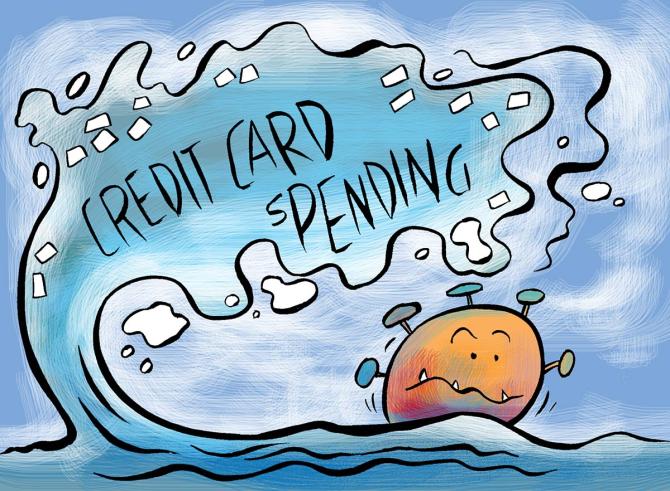Cards aren't just for the affluent--most Indians use them. There is little reason not to track their use to predict economic growth.

vIt’s always been a struggle for economists and statisticians to forecast India’s gross domestic product (GDP) correctly, and say where the economy is headed before the official numbers come out.
If estimating the GDP is tough, forecasting it in real time is complicated.
It involves looking at tens of indicators, such as industrial production, electricity consumption and exports, to arrive at a number.
But have you ever experienced this: getting lost while solving a problem and then realising that the solution was sitting right on your desk?
A recent study by the Reserve Bank of India (RBI) offers a possible solution to GDP forecasting, using an indicator easily available: payments.
The RBI, in its latest biannual Monetary Policy Report, explained how India’s nominal GDP is related to cash withdrawals and card payments.
It shows that GDP is as strongly correlated to debit and credit card usage as it is to sectoral indicators like electricity consumption and industrial production.
Even though the chart looks difficult to comprehend at first, it has a simple message.
It shows the error that occurs while predicting values of nominal GDP using three models, which use three different sets of high-frequency indicators.The smaller the error, the better the model.
The first model correlates GDP with petroleum and electricity consumption, and rail freight traffic.
The second model correlates it with usage of debit and credit cards for payments, and cash withdrawals at ATMs.
The third model correlates India’s nominal GDP with both sets of indicators.
The last column is a benchmark, which predicts future values of nominal GDP using the past values in the same data series.
In crude terms, any model that gives a smaller error than this is a good model.
Please note that these models are not rigorously tested econometric models, but preliminary ones.
The chart’s central message is that the error while predicting nominal GDP using the first model is higher than the error that occurs when forecasting it using the second or third model.
Look at how the error reduces as we add ATM cash and card usage: it is the highest for the model that uses just consumption and freight indicators.
It reduces significantly for the model that uses only ATM cash and cards usage.
It further reduces marginally when the model that combines the both is used.
In other words, readily available data on credit and debit card usage improves GDP forecasting, and gives us a better estimate of the GDP, than using a model that includes only real-time consumption and trade indicators.
This preliminary analysis uses data from the second quarter of 2011-12 to the third quarter of 2019-20, thus looking at a sufficient number of data points.
What does this mean? To understand this, let us look at how India’s quarterly nominal GDP and credit and debit card usage move.
Movement curve of card payments and ATM cash withdrawals mimics the movement in nominal GDP.
See how they follow a similar path, though at different levels.
In fact, a quick calculation in MS EXCEL shows that the two are strongly correlated (nerds may want to try it out: use this data, and the CORREL function in EXCEL).
Why would this be happening?
We use debit and credit cards to spend, be it on goods and services used in daily life — like food — or on discretionary items like beauty products.
People also withdraw cash from ATMs for household use.
Card usage and cash withdrawals, experts say, represent aggregate consumption in the economy – of nearly all goods and services in the economy, exhibiting a better relationship with GDP than multiple sectoral indicators.
One may say debit and credit cards are used by the affluent.
Would using them as criteria make India’s GDP skewed towards the richer and organised part of the economy?
Not really…
Firstly, the ownership of debit cards has skyrocketed in India in the last decade.
From 185 million debit cards in April 2010, India now has 914 million debit cards held by individuals, families, and institutions – a five-fold jump.
There are 67 debit cards per hundred people in India, compared with 15 per 100 a decade ago.
But there is a caveat here. That there are 67 debit cards per 100 people does not mean 67 per cent of Indians have, or use, debit cards. Your purse has several cards.
Secondly, let us consider that the usage of debit cards (and credit cards as well) is limited to the relatively well-off individuals.
Even though the GDP is correlated with transactions made by rich households, it would still be representative of the whole economy if the ratio of cards and ATM cash usage to the overall transactions in the economy remained fairly constant.
So, cash and cards potentially show us where GDP is headed.
You would be curious about the Q2 GDP number, I know.
But this model has not been fully developed yet.
Nevertheless, doesn’t it make a case for taking debit and credit card payments more seriously as a bellwether for economic growth? Think about it.











